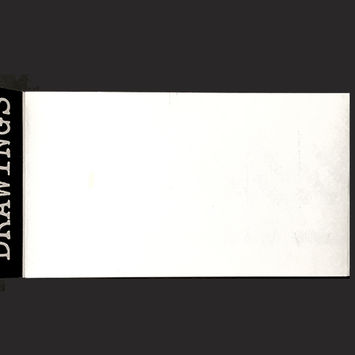VALUES:
Concepts + Pragmatics = Responses
My experiences were conditioned by an Undergraduate major in Architecture at Princeton University and Graduate Professional degree at Yale University's School of Art & Architecture. Princeton was in transition with new Faculty added as I began Junior Independent Work, with Michael Graves, Peter Eisenman as the "Young Turks", and Kenneth Frampton as Graduate Faculty. Visitors included Colin Rowe, James Gowan and Colin St.John-Wilson. Yale had a new Architecture Chair, Charles Moore, and the School had a range of Departments in its new A&A Building designed by the departing Chair Paul Rudolph, as well as a potential opportunity of being involved in Perspecta-The Yale Architectural Journal. Princeton had never been "Bauhaused", and I took advantage of both required and elective History classes. Graves, Eisenman and Frampton introduced "theory" as a critical element. Yale had opportunities to take courses in Planning, had the Architecture Library in the building, and opportunities of exposure to other fields, such as Graphic Design. Its Faculty included Robert Venturi, James Stirling as well as Serge Chermayeff, with visitors such as Shadrach Woods: a serindipitous complementary viewpoints. The Connections may be seen throughout this website. . .Portfolio 13 exhibits my Student Work and these influences.
A series of small projects formed the basis of my beginning practice in architecture. Collectively these works represent varied investigations of specific design themes. Their modesty of scale has as much importance as larger projects, for individually each has been an exploration of fundamental architectural order.From site plan to particular building details, design represents a continuum across all scales.
Context
External considerations represent a primary force in design formulation. First moves focus on the building "footprint" as a means by which aspects of site context are incorporated into the overall concept. Building form is directly affected by responses which impact site organization, as well as considerations of existing conditions.
Plan
The plan, and space planning, lies at the core of design.The plan is the resolution of internal needs both in terms of clarifying relationships into a comprehensible order, as well as the means by which these needs are brought into a proper relationship to the site. Plan organization and its structured clarity transcend the articularization of individual elements and form the basis for the perception of the whole designed environment. Spaces also have extended uses as a result of their place in the plan, and each is given additional considerations of how they might extend relationships to one another.
Geometry
As an aspect of structuring the order of an environment, varied aspects of geometry introduce a sense of regularity as a means of connecting the pieces in a design. Basic geometrical units have been useful in setting out an overall order, but other aspects of geometry have included:
-
proportional systems in the control of three dimensions
-
the discipline of roof geometries as an ordering device
-
axial relationship and alignments to extend connections between elements
-
localized or shifted symmetries.
Section
Three-dimensional elaboration extends the order generated by plan organization and forms spatial connections through the development of the building-cross section. The section is a means of enriching simple moves of the plan; richness of visual experience may contrast simplicity of plan with complexity of the vertical dimension.
Spatial Order
As use-areas in a design are invested with multiple considerations, the design of edge conditions or thresholds and transitions is a means of defining boundaries, as well as enlarging the perception of connections. I regularize the clarity of spatial fabrication through a conscious gridding of space. The structured reading of grids as perceived spatial slots allows exceptions and incidental elaborations to be understood against a reference frame, relating the particular to a more general order.
Dialogue of Elements
The conscious dialogue between architectural elements is the means for the fabrication of a design intent. Visual relationships between elements, their formal properties and often juxtapositions related within a reference frame establish the fabric of design. Scale emerges from these relationships, ordered by geometry.
Style and Image
Each project establishes its own vocabulary, often proceeding from the "givens"of a situation. I admit to the conscious acknowledgement of image, readily perceived at the layman level as an ordering context for further readings, although the range·of imagery varies from background to primary. Metaphorical or symbolic references relate to the aesthetic disposition of individual users; their inclusion facilitates the process of perception, reinforces the reading of the built environment, and allow the user to "complete the picture". A degree of restrained formality, extending as it does from initial plan moves, permeates the work and the fit between elements of a design occurs as a result.
The User
Design is seen as a positive process in the reformation of the built environment, the end product of which is a container for activities and human use. The mandate in engaging this process is to enlarge the user's perceptions of themselves, their relationships to one another, and a sense of place in scale with the appropriate needs of human interaction.
A means to achieve this awareness in the process of representation of needs, context and cultural conventions through the fabrication of a visual structure which can be read on a variety of levels. The formal devices I have explored are used to integrate these into a whole, a sense of unity with diversity that contributes to the identity of a particular place.
On a pragmatic level, design must address a clear resolution of often conflicting needs into a functioning whole. Design must also illuminate a sense of purpose and dignify all activities, to create a comprehension of purpose through the clarification of order within the environment. To this end, the process must acknowledge and invest the cultural and symbolic needs of an environment's users.






















